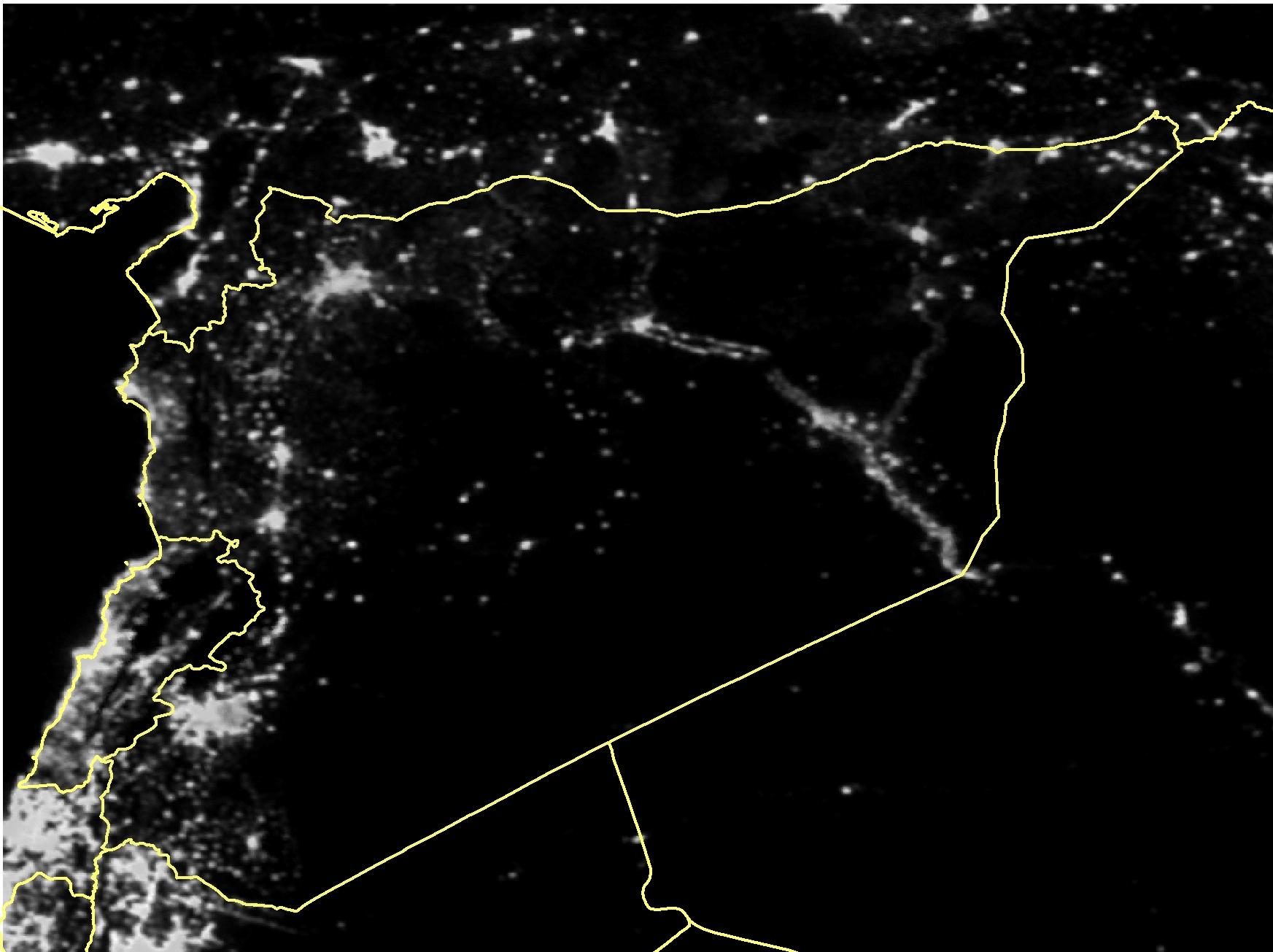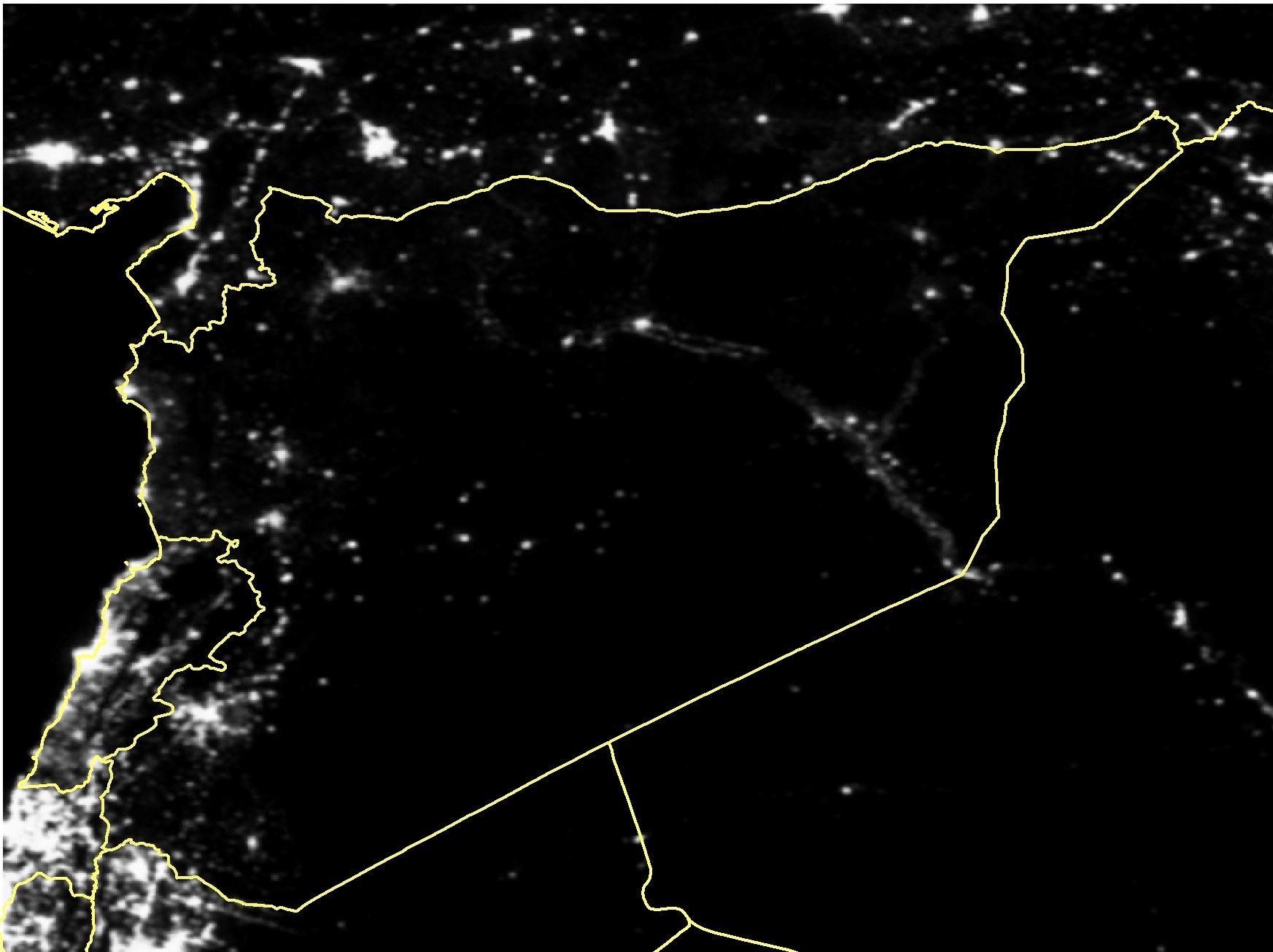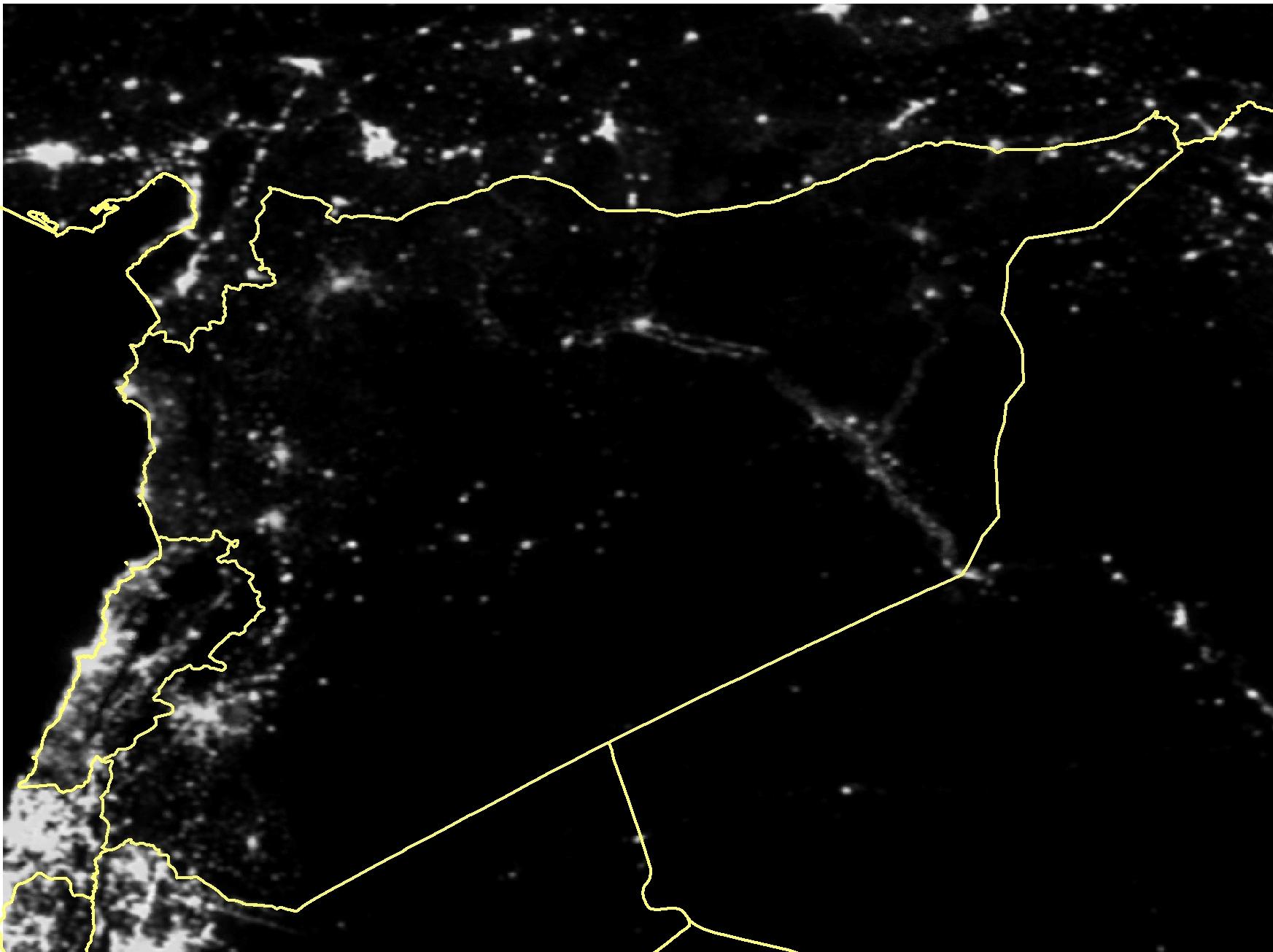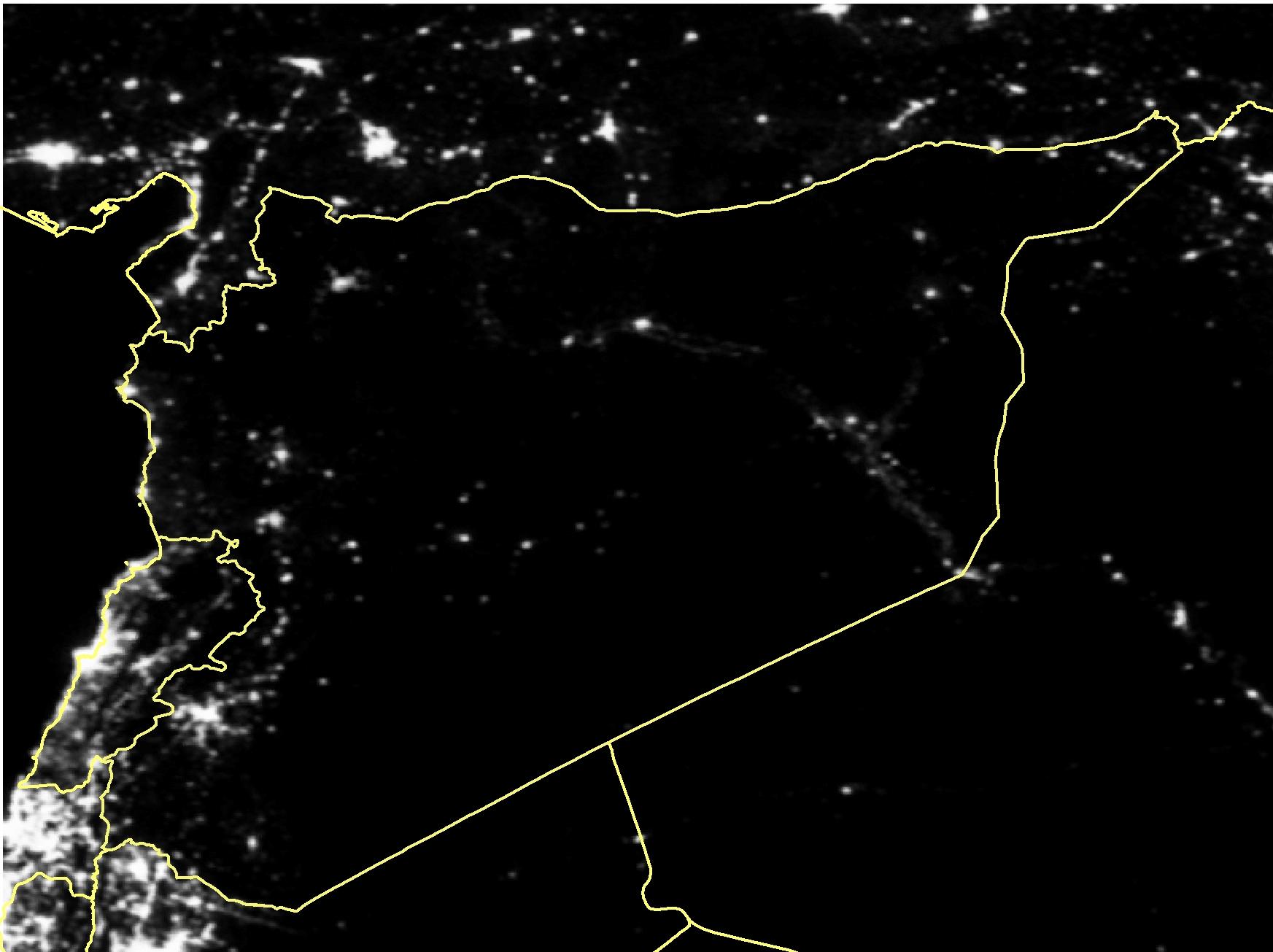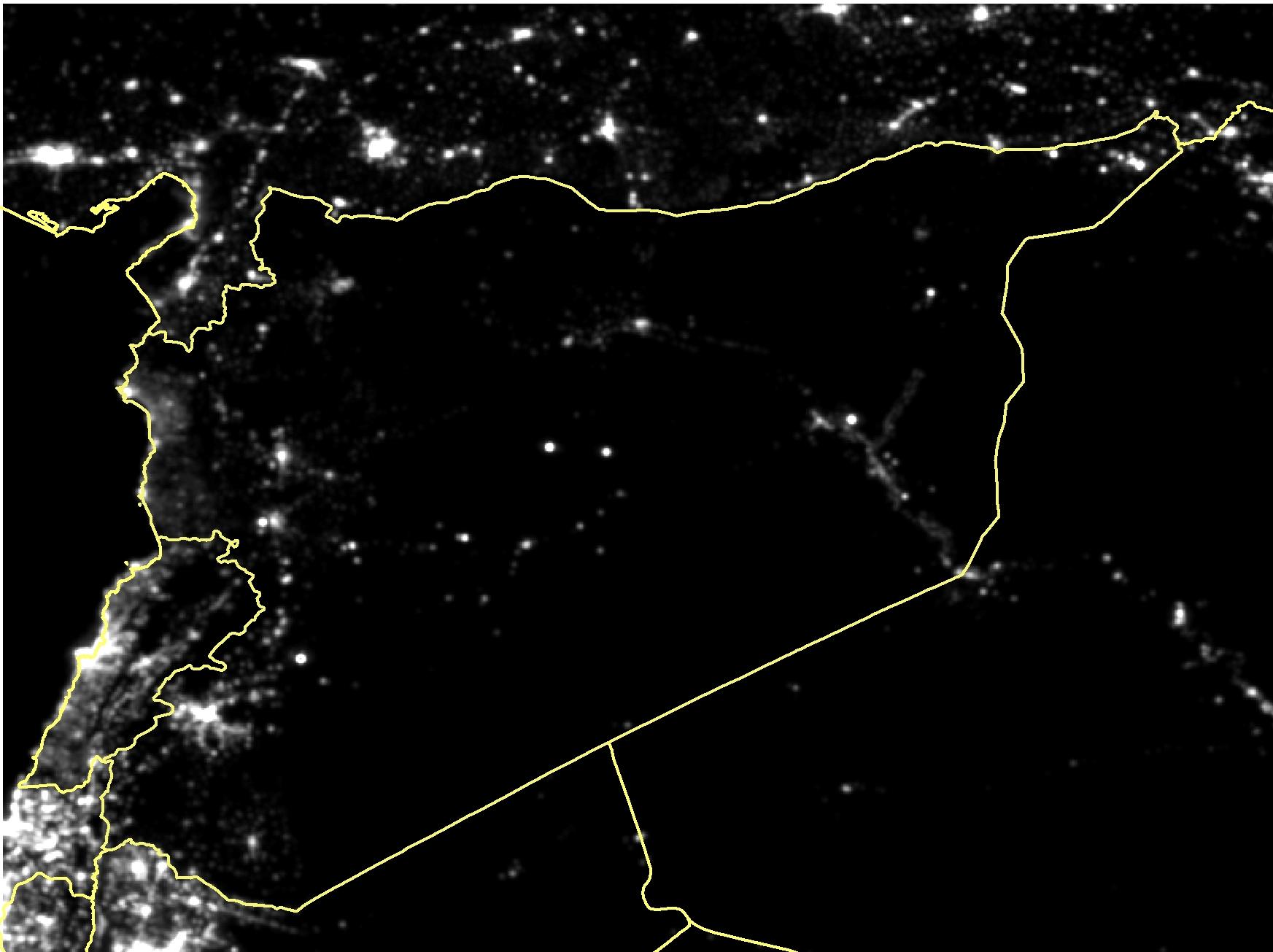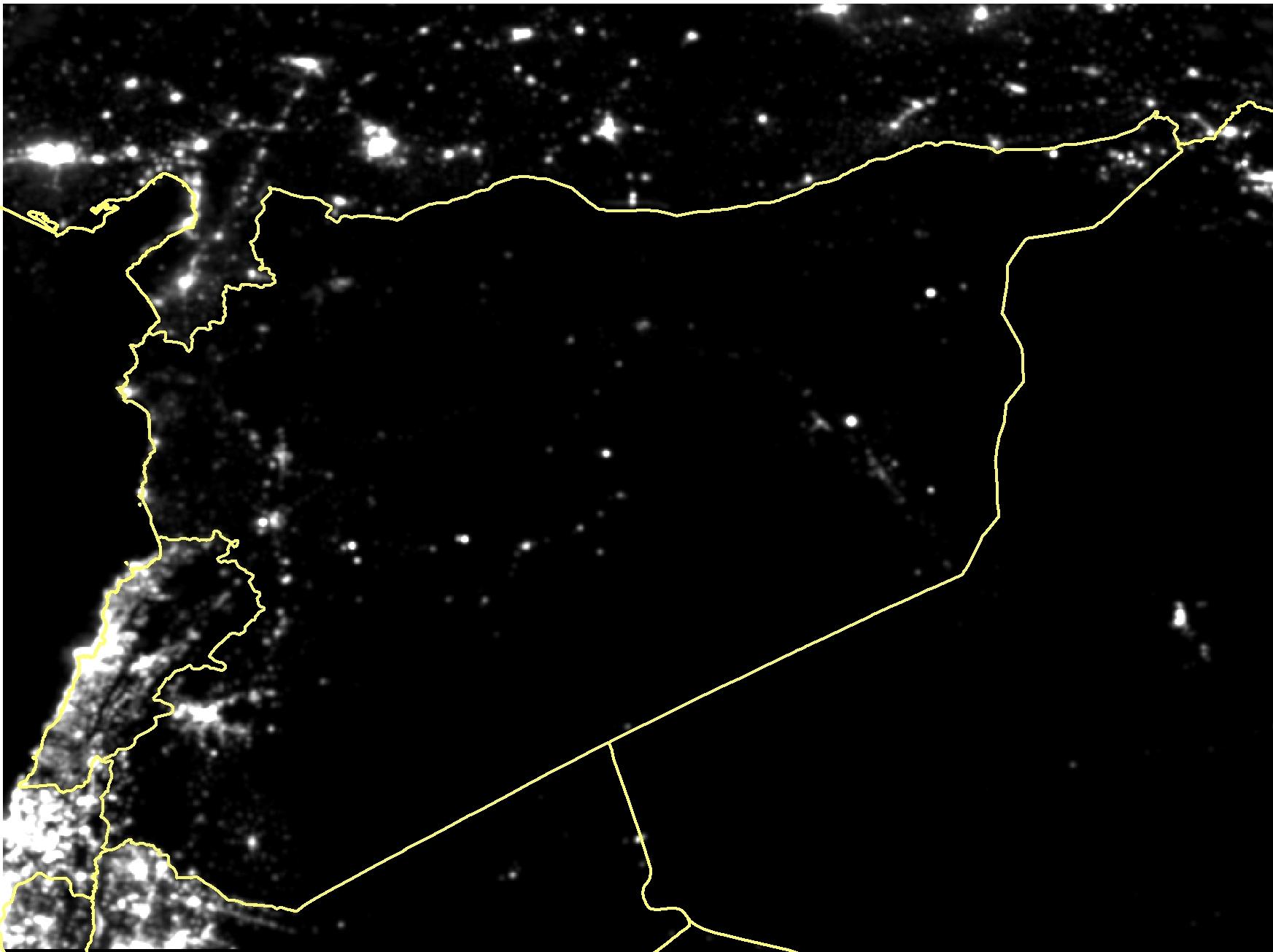“210,060 people have died.
That’s 145 deaths a day.
Six every hour.”
A soldier at Atme camp for internally displaced Syrians near the Turkish border. © Jodi Hilton/IRIN
“Another 200,000 have died
from non-communicable diseases.
Thousands of these could have been saved
if they had received basic medical treatment.”
These satellite images, taken at different times in the war and released by #WithSyria, show how up to 83 percent of the lights in the country have gone out over four years.
“1.5 million have been injured or disabled.”
A young Syrian child peers out of a window in Lebanon's Beka'a Valley. Christina Malkoun/IRIN
“3.9 million have fled to neighbouring countries.
109 every hour since the crisis began.”
This Syrian refugee family of five were about to be evicted from their small, cold room in al Marj village, in Lebanon's Beka'a Valley because they could barely afford to pay the rent. © Christina Malkoun/IRIN
“At least 7.6 million have been displaced within Syria.
”
Children at Atme camp for displaced people in northern Syria, near the border with Turkey. © Jodi Hilton/IRIN
“240,000 people are living under siege.
The number of people living in areas difficult or
impossible for aid agencies has doubled in the last
year to 4.8 million.
UN convoys reached only 1.1 million people in such areas in 2014.”
18,000 Palestinian refugees remain trapped in the Yarmouk neighbourhood of Damascus. UNRWA USA
“Two thirds of the population are living in extreme poverty”
Many Syrians who cross the border into Jordan, do so without shoes. UNHCR/ G. Beals
“Half of school-age children are not going to school”
A makeshift tent school for Syrian children in Jordan. UNHCR/ S. Baldwin
“Average life expectancy was 76 in 2010
By the end of 2014 it was 56”
Jalila's daughter-in-law, Amal died while giving birth. “We took her to the hospital and there was nothing wrong with her. After the birth, they showed us the babies but they didn’t bring Amal out." UNHCR/A. McConnel
“While funding has increased, needs have grown faster.
UN-led appeals for funding to respond to the Syrian crisis were 58 percent
funded in 2014, compared to 70 and 71 percent in previous years.”
Compiled by Kristy Siegfried and Joe Dyke



